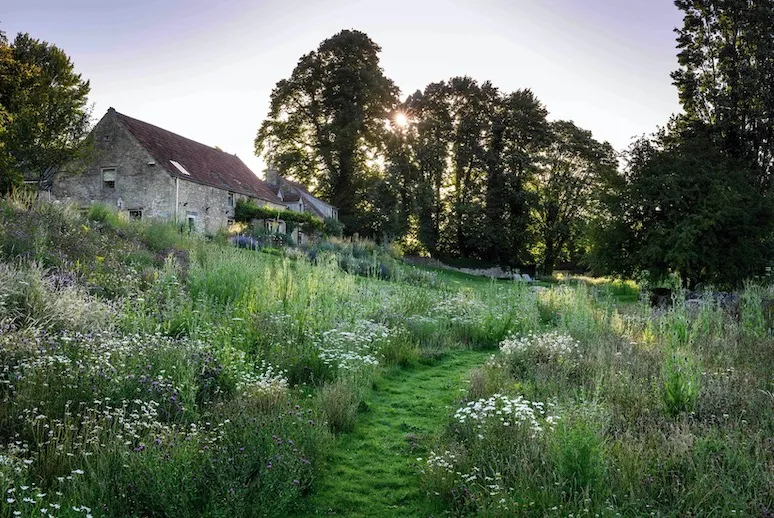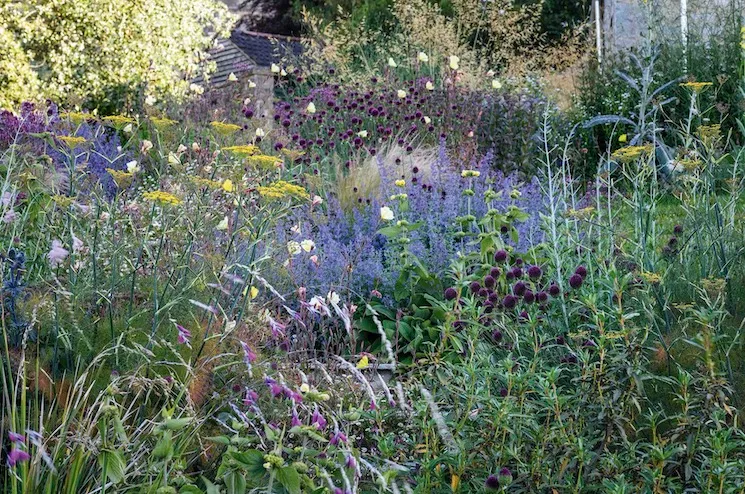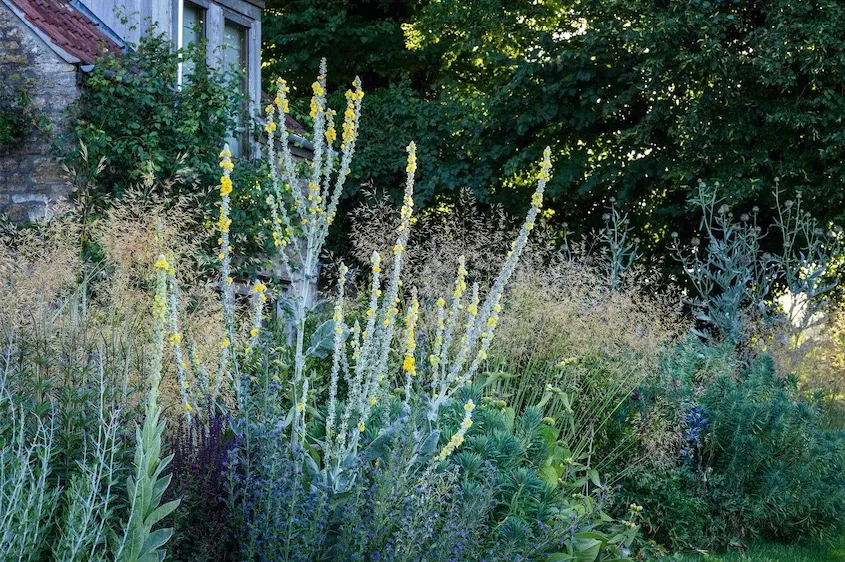When you look down on Jo McKerr’s wonderful meadows and over to the hills beyond it is easy to get seduced into romantic notions about pastoral idylls. Her expansive naturalistic planting style means the garden teems with wildlife, pollinators buzz and at night bats swoop from her 70m-long abandoned canal tunnel on to this rich, biodiverse landscape. But it wasn’t always this way.
You may also like
- Expert tips for designing a meadow
- The best meadow plants
- Discover Emorsgate and its supply of wildflower seeds
“When we first came here the landscape was very much scarred by human intervention,” explains Jo. Despite sitting bang in the middle of the countryside, it is actually a brownfield site, which at one point had housed a canal, hence the tunnel, a railway line and a dairy farm. “The landscape has been dug up, shifted, moved by cows, canals, trains and people, but it still retained such personality. On my first impression I completely fell in love with a place,” she says.

In Brief
What A former brownfield site in a rural location turned into a naturalistic haven for wildlife. Where Somerset. Soil Limestone-rich Cotswold brash with post-industrial soils from railway and canal building. Size Two acres. Climate Mild, much of the garden is on a south-facing slope. Hardiness USDA 8.
Planting for the meadow garden
For the first 18 months, they did a little land shifting to shape the garden, covered it with black plastic to suppress the brambles, planted a native hedge around the edge of the garden, added hazel and crab apple trees and then left it while they worked on the house. In this time, Jo started to wonder if it was possible to make a garden where you couldn’t quite tell where the garden stopped and the wider landscape started. She decided on native meadows and plantings that would help regenerate the existing seed bank. The soil is not particularly fertile and in places deeply compacted, which lent itself to wildflower meadows. “It’s essentially derelict land lacking in nitrogen, but that actually means more possibilities; the dynamic of poor soil is actually something great to work with.”

Jo has done lots of research in bioremediation: “By using meadow plants we are essentially cleaning up the site, making it more holistic and wholesome. But as a design tool this is really interesting because you’re also making an ecological memory bank. In 20 years’ time it will have a very different seed bank than now, the meadows will change, the landscape will evolve but you can build that into your design,” she explains.

The garden is a series of different matrices because this brings in diversity and creates resilience across the whole system. Around the house it is at its most ornamental in a traditional sense, while the main garden is composed of a large, naturalistic pond and the many meadows. “We did some earthworks at the start, we created the slope in part to use up all the rubble and made a reclaimed wall to keep the neighbour’s garden from falling into ours,” she laughs. Throughout these spaces all the material from the stone, to the timber beams for seating is carefully reclaimed and recycled in keeping with her environmental ethic.

Best plants for a gardened meadow
At the start of the meadows under a walnut tree is a spring meadow of cowslips, white violets and Crocus tommasinianus that blends into a bank of a herbal meadow full of thyme and origanum, then the garden rolls out into summer meadows. The meadows are cut in rotation, starting with the spring ones and ending with the railway lines meadow that sits next to the hedgerow. “By cutting in rotation we can allow the wildlife somewhere to move on to and it means we don’t need to use a lot of machinery,” Jo explains.

Although traditionally managed, the meadows are not grassland. “They are gardened meadows, which means they are managed for flowers and effect. They are deliberately meant to look beautiful and aspirational, because I believe if people are going to adopt wilder-looking design for wildlife, then it needs to look very good.”
Don't miss our tips on how to design your own meadow and the best meadow plants.
